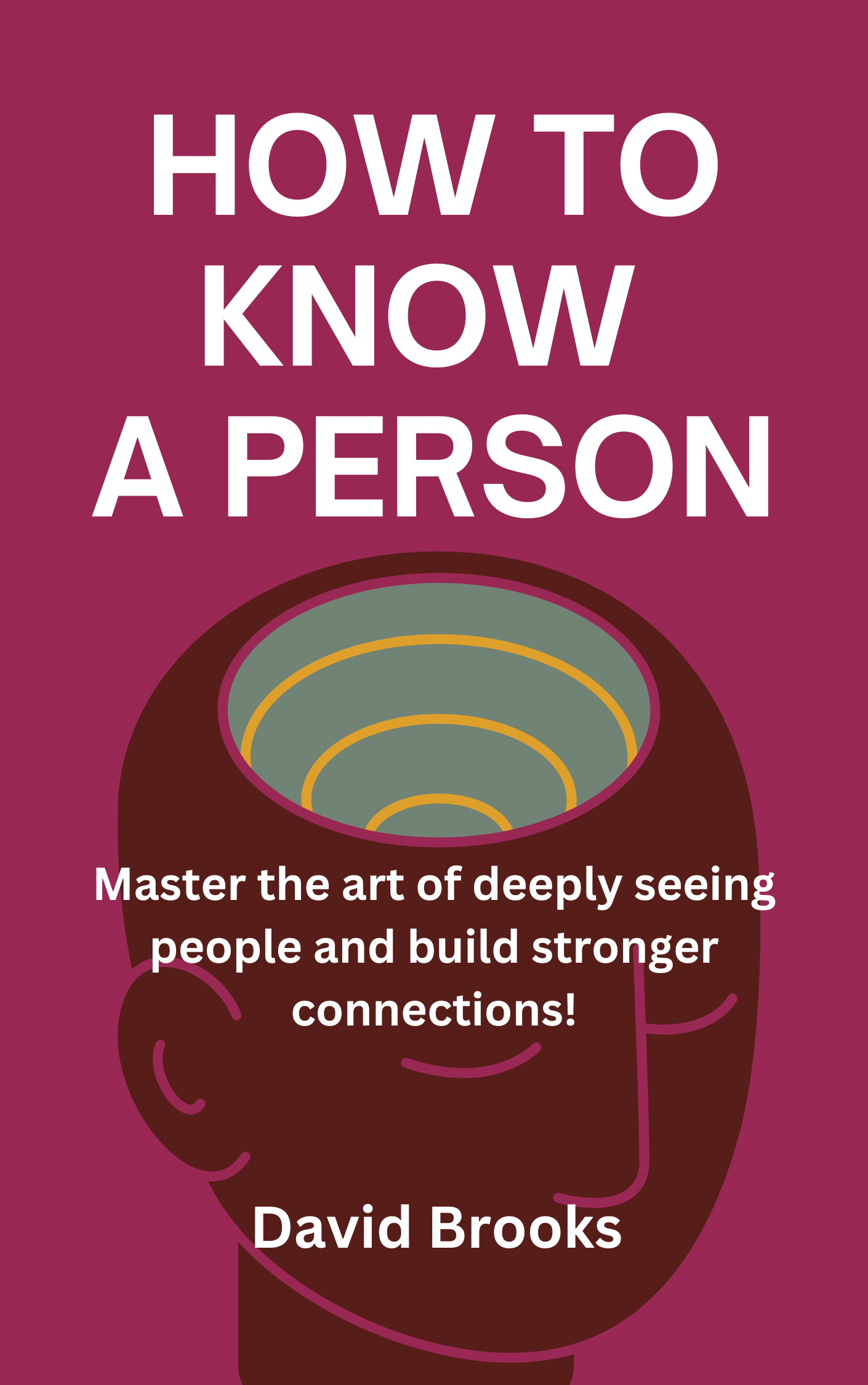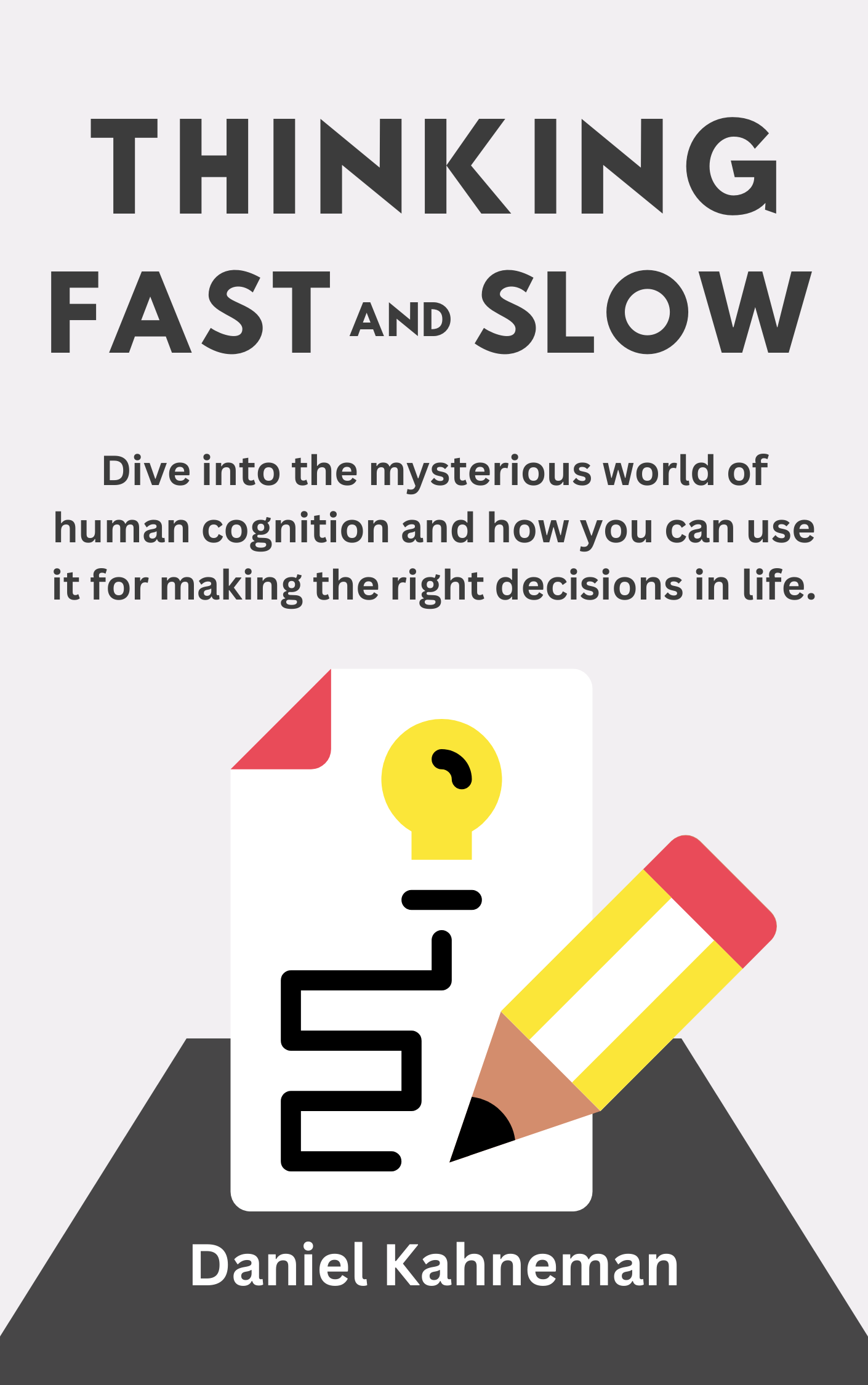Introduction
Have you ever noticed that some people immediately crumble under challenges even though they clearly have the potential while others thrive in those same challenges? If yes, then this book is going to be an epiphany!
At its heart lies a simple yet powerful concept: your beliefs about yourself guide nearly every aspect of your life. This book reveals how your mindset - whether you believe abilities are fixed or can grow - shapes your personality, potential, and success.
Join us as we explore real-life stories and practical applications so you can spot your current mindset and transform it if needed.
Ready to unlock your full potential?
The Two Mindsets
Have you ever watched a child tackle a difficult puzzle? Some kids get frustrated and give up. Others lean in with excitement saying, "I love a challenge!" This fascinated Dweck. She discovered two fundamental mindsets that shape how we view ourselves and navigate life's challenges.
The fixed mindset believes our qualities are carved in stone. You're either smart or you're not. Talented or not. This creates a constant need to prove yourself. Every situation becomes a judgment: Will I look smart or dumb? Will I succeed or fail? When someone with a fixed mindset gets a C+ on a test, receives a parking ticket, and gets brushed off by a friend, they don't just feel disappointed - they feel like a complete failure. "I'm worthless," they think. Their response? Often to hide, give up, or lash out.
The growth mindset, however, sees qualities as things you can develop through effort. Intelligence, personality, and abilities aren't fixed - they're cultivable. This creates a passion for learning rather than approval-seeking.
Research shows people with growth mindsets are remarkably accurate about their abilities, while fixed-mindset folks distort reality to protect their self-image. The growth mindset fosters resilience, creativity, and ultimately, greater success.
Luckily, one's mindset isn't fixed. By recognizing when you're in a fixed mindset, you can start shifting your thinking. You can choose to see challenges as opportunities, criticism as helpful, and effort as the path to mastery.
But before we get there, we're gonna hear some stories that’ll help you understand your mindset. Are you a fixed or a growth mindset person? Or maybe a half-and-half?
Two Worlds Apart
When you step into a mindset, you enter a whole new world. All people operate in their own realities - and their chosen reality changes everything.
In the fixed mindset world, life's a test. Success means proving your intelligence or talent, validating qualities you supposedly were born with. You either have "it" or you don't and that's all you're interested in verifying. Growing, getting better, learning are the least concerns of such people. For growth mindset individuals, success means stretching themselves, developing new abilities, becoming more tomorrow than they are today. These mindsets transform everything. Here's a story proving just that!
When Enron collapsed in 2001, the business world gasped. How could such a seemingly unstoppable corporate powerhouse suddenly implode? The answer was... their mindset.
Enron embodied what is called the "talent mindset" - an obsession with natural ability over growth. The company recruited people with impressive degrees and paid them generously, but by doing that, they also created an environment where everyone was forced to "appear" talented rather than actually improve their capabilities. This fixed mindset causes real problems. Studies show that people with fixed mindsets don't correct their shortcomings. They're totally absorbed in maintaining their "smart" image.
The alternative approach - the growth mindset - produces dramatically different results. Jim Collins studied companies that transformed from merely good to genuinely great, maintaining excellence for at least fifteen years. These standout companies weren't led by flashy, ego-driven CEOs. Instead, their leaders were often humble individuals who could confront brutal facts while maintaining unwavering faith in eventual success. They didn't constantly try to prove their superiority, they surrounded themselves with top talent without feeling threatened, they looked squarely at their mistakes, and they actively sought feedback.
This forms your self-assessment tip #1: figure out what means more to you, validation or challenge?
Analyse Your Daily Life to Determine Your Current Mindset
Mindsets shape countless small moments throughout our day - observing these will provide another clue for your self-assessment. From whether a child tries a harder puzzle to how a spouse receives a suggestion, mindset plays a role everywhere. Even in your kid's classroom!
A single test can become a life sentence in the fixed mindset world.
After moving to a new country at age five, Loretta took a placement test and initially wasn't put in the advanced "Eagles" class. Though later transferred there and academically successful for years, she never felt like a true Eagle. That first test had permanently branded her as an impostor in her own mind. The actual reasons for her initial placement - language adjustment, classroom space, or easing her transition - never entered her thinking. In the fixed mindset, there's no becoming an Eagle; you either are one instantly or you're not.
This isn't rare. When Dweck's team showed fifth-graders a mystery box containing a supposed test of "an important school ability," the fixed-mindset children believed this unknown test could measure not just their current intelligence but their future potential as well. They granted a single evaluation the power to define them forever. No wonder anxiety skyrockets before tests!
Perhaps most surprisingly, these mindsets create profound compatibility issues in relationships. When asked about ideal partners, fixed-mindset people described someone who would essentially worship them, put them on pedestals, treat them as perfect, and provide constant validation. Growth-mindset individuals, however, seek partners who will help them develop: people who lovingly identify their flaws, challenge them to improve, and encourage learning. They don't see themselves as finished products needing admiration but as works-in-progress seeking evolution with a supportive partner.
Don't worry if you still don't see which mindset you lean towards. We have many more characteristics.
Your View of Yourself Shapes Your Mindset
So, what makes people develop either of the two mindsets? It comes down to how they perceive themselves.
Many of us have been raised to believe that being "special" is the ultimate goal. Dweck was one of those people. She shares a telling story about waiting for a taxi on a freezing winter night after the opera. Standing in a crowd of people, all desperate for a cab, she finally got one. The driver told her, "You were different." This comment thrilled her.
This pursuit of specialness is all fun and games until it leads us to see ourselves as superior to others. When "special" turns into "better than others," that creates superiority and entitlement.
This superiority complex obviously affects business leaders too. It's so common it has a name: "CEO disease." Lee Lacocca caught it bad after his initial success at Chrysler. Instead of continuing to innovate, he kept producing the same car models with minor tweaks - cars nobody wanted anymore. Meanwhile, Japanese companies completely reinvented what cars should be, quickly taking over the market. What happened? Lacocca chose to create a world where he indulged in his superiority and before he knew it, that superiority stopped his learning.
Not all leaders fall into this trap. Darwin Smith, reflecting on his remarkable leadership at Kimberly-Clark, said, "I never stopped trying to be qualified for the job." Or Lou Gerstner at IBM, who accepted his short-term criticism while building foundations for long-term growth. Gerstner was initially called a failure, but a few years later, IBM was leading its field again.
People with growth mindsets simply have a different view of themselves - not one that demands special treatment, but one that creates confidence and determination and commitment to be better!
So far, we’ve seen how the mindsets take success. Let’s now learn how they take failure.
The Failure Identity
Three-year-old Robert's parents worshipped him until he failed to get into New York's top preschool. Preschool!!! And suddenly, their bright, creative child became someone who had "discredited himself and shamed them." At three years old, Robert wasn't just a child who experienced a setback, he became a failure in their eyes.
This transformation from "I failed" (an action) to "I am a failure" (an identity) makes all the difference. It doesn't just make failure painful; it makes it permanent.
Growth-minded people handle setbacks completely differently. Take Jim Marshall, the Minnesota Vikings player who scooped up a football and ran for a touchdown as the crowd cheered... only to discover he'd run the wrong way and scored for the opposing team. On national television! The shame was overwhelming. But Marshall made a critical choice at halftime. He played brilliantly in the second half, contributing to his team's victory. The experience didn't define him. HE defined what the experience meant!
Setbacks aren't devastating - they're motivating. Michael Jordan embraced his failures: "Twenty-six times, I've been trusted to take the game-winning shot, and missed." Each miss only meant more practice shots afterward, not that he was a failure!
The fixed mindset also offers terrible strategies for handling failure. They never accept responsibility for their losses. Heard of golfer Sergio Garcia? When his game suffered, he fired caddie after caddie, blaming them for everything. He once blamed his shoe when he slipped and missed a shot, then threw and kicked the shoe, nearly hitting an official. These aren't solutions—they're tantrums.
This simple distinction shapes everything: how much we risk, how we respond to setbacks, whether we persist or quit, blame or take responsibility. And even how we view effort. More on that next!
Trying Hard Is Actually Cool
Remember the tortoise and the hare story? These stories tried to teach us about effort but ended up giving it a pretty bad reputation. They painted a picture where effort is only for the slow folks, the ones who lack natural talent. Our society reinforces this viewpoint constantly. Geniuses - they don’t need effort. Thats why we love stories about effortless genius. We talk about Picasso as if he popped out of the womb with a paintbrush in hand.
People with a growth mindset see things differently. There's no such thing as effortless geniuses. They might appreciate natural talent, but they truly admire effort.
But why do some talented people avoid effort? From the fixed mindset perspective, trying hard is risky business. If you're labeled a "natural" or a "genius," then needing effort suggests maybe you're not so special after all. Plus, effort removes all your convenient excuses. Without trying, you can always claim, "I could have been great." But once you give your all, that safety net disappears.
Take Nadja Salerno-Sonnenberg, violin prodigy who debuted at age ten. When she arrived at Juilliard to study with the renowned teacher Dorothy DeLay, she refused to correct her poor habits only because was terrified of trying her hardest and still failing. When DeLay finally delivered an ultimatum, Salerno-Sonnenberg was forced to make a choice, and she chose to try. The lesson, as she says, "You have to work hardest for the things you love most."
In the growth mindset, the greatest tragedy isn't failing after trying; it's not trying at all. And this fear of not giving all their effort leads the growth mindset people to stretch beyond what seems possible. After a horse-riding accident left Christopher Reeve paralyzed from the neck down, medical experts told him to accept his condition as permanent. Reeve disagreed and began an intense exercise program. Doctors worried he was setting himself up for disappointment, but Reeve persisted. What did he have to lose anyway, right? Five years later, he began regaining movement!
When we embrace effort as the path to growth rather than proof of inadequacy, we open doors to possibilities we can't even imagine.
Alright! One last characteristic and then you can have some tips on how to alter your mindset.
Words Shape Us
Every day, in homes and classrooms across the world, adults are unknowingly programming the minds of children. Not through complex technology or manipulation, but through simple words, reactions, and attitudes. These seemingly small interactions shape how children view themselves and their abilities for decades to come.
When we praise a child by saying, "You're so smart!" it feels supportive. But praising intelligence actually harms motivation and performance. Children who receive this type of praise become obsessed with maintaining their "smart" image. They avoid challenges that might expose their flaws and give up quickly when facing difficulties.
So what's the alternative? Focus on the process, not the person. When a child succeeds, highlight their strategies: "I like how you tried different approaches until you found one that worked!" When they put in time and effort: "The way you stuck with that problem shows real dedication." This teaches children to value growth over appearing talented.
The messages we send about failure matter just as much as those about success. Take nine-year-old Elizabeth at her first gymnastics meet. Despite her confidence and preparation, she didn't win any ribbons. Many parents would immediately jump to protect their child's feelings with comments like "You were robbed!" or "You're still the best to me!" Elizabeth's father took a different approach. He acknowledged her disappointment but told her truthfully that she hadn't yet earned a win. Other competitors had trained longer and worked harder. If she wanted to excel, she would need to put in more practice. Elizabeth took this to heart, dedicated herself to improving, and at the next competition won five ribbons and the overall championship.
This honest feedback might seem harsh in the moment, but it taught Elizabeth how to learn from failure and what it takes to succeed.
Unlocking Growth Mindset
And finally, we dive into Dweck's insights on how to cultivate a growth mindset.
First thing, many people mistakenly believe that change is simply a matter of willpower. If you're strong, you can change; if you're weak, you can't. No! You need concrete tools for managing your mindset. Second, this shift takes time, effort, and consistent support. If you stop doing what caused the improvement once you see results, the changes would fade away.
With that in mind, let's see how you can develop an authentic growth orientated mindset!
First, embrace your fixed mindset. Yes, you heard that right. We all have fixed-mindset tendencies, so acknowledging them rather than pretending they don't exist is more helpful than anything.
Second, identify your fixed-mindset triggers. What situations activate your fixed thinking? It might be facing a new challenge, struggling repeatedly with a problem, experiencing public failure, or meeting someone more skilled than you in your specialty area. For some people, being under pressure triggers fixed thinking; for others, it's receiving criticism or experiencing self-doubt.
Third, name your fixed-mindset persona. This might sound strange, but giving your fixed mindset a name helps you recognize when it appears and separate it from your core identity.
Finally, educate your fixed-mindset persona. Don't try to banish it; instead, take it along on your growth journey. When you're about to step outside your comfort zone and your fixed-mindset persona warns you to stop, thank it for its concern but explain why you want to proceed anyway. When you hit setbacks, let it have its moment of panic, then talk to it about your plan to learn and move forward.
Remember that your fixed-mindset persona developed to protect you. It's trying to keep you safe from judgment and failure. Your job isn't to silence it but to teach it new ways to support your growth.










